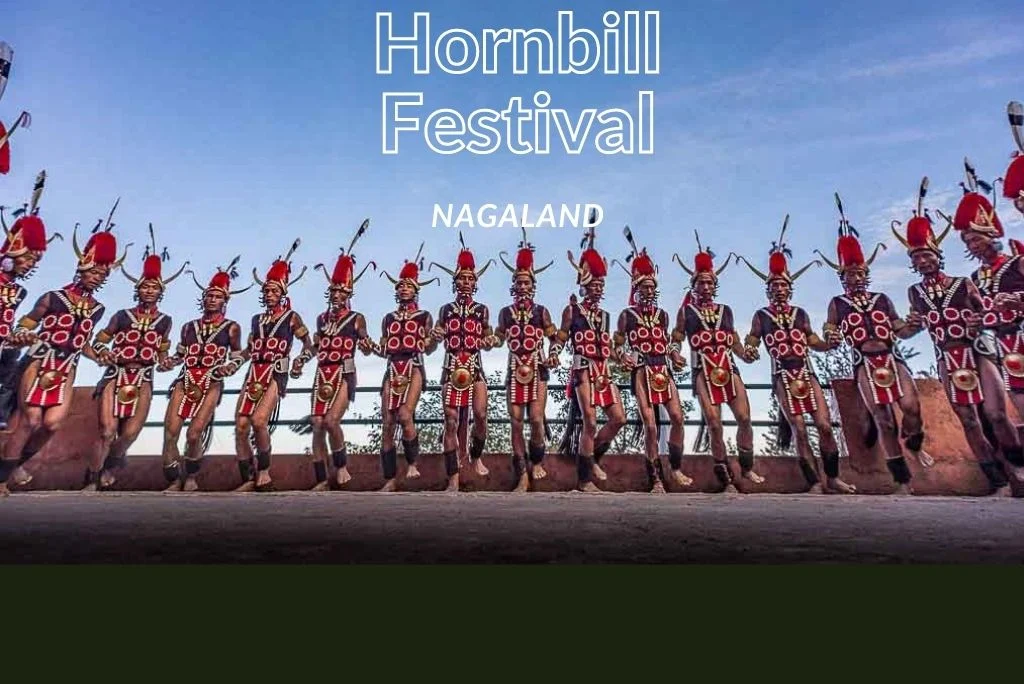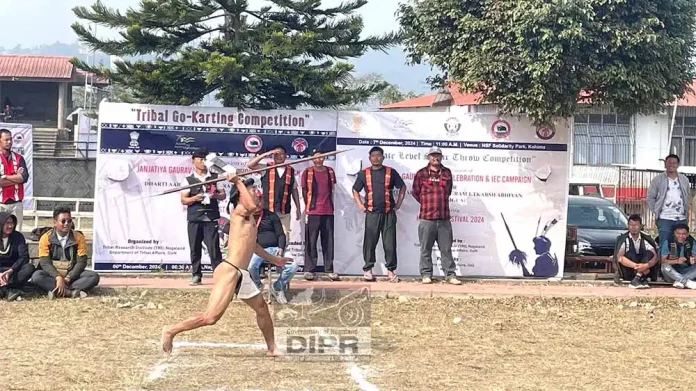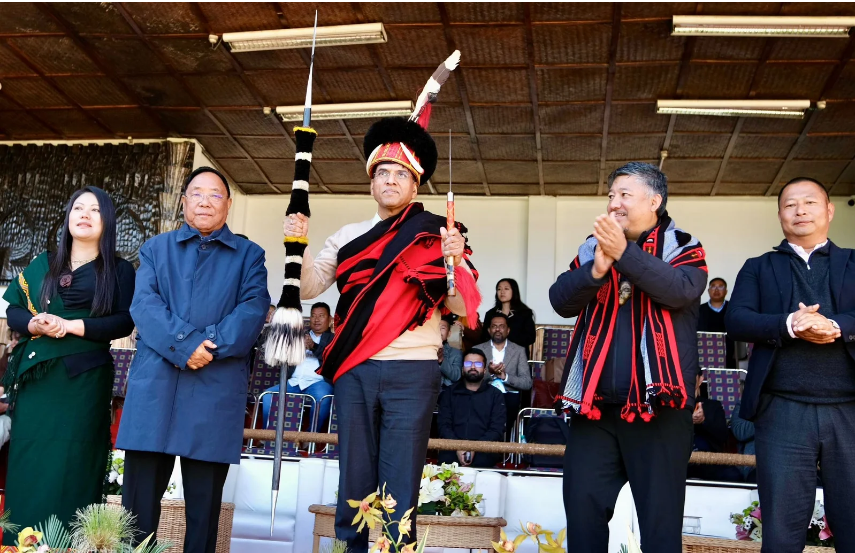
Known as the “Festival of Festivals,” the Hornbill Festival is a colorful and impressive event that takes place every year in Nagaland, India. The rich cultural diversity and legacy of the Naga tribes are showcased throughout this week-long celebration, which is one of the most well-known Nagaland cultural festivals. It takes place from December 1st to December 10th. The festival is a mashup of indigenous arts, dances, music, and crafts, and it is named after the hornbill bird, which is a sign of respect and folklore among the Nagas. It is also known as the Hornbill Festival Kisama Village since it takes place at the Naga Heritage Village in Kisama, which is close to Kohima, the state capital.
Historical Context
The Nagaland government started the Hornbill Festival in 2000 with the goal of promoting the state’s cultural heritage and fostering inter-tribal relations. The celebration was created as an attempt to protect and revitalize the Naga tribes’ traditions and customs, which were in danger of disappearing as a result of modernization and shifting lifestyles. It has developed into one of Northeast India’s most popular festivals throughout the years, drawing visitors from all over the world.
The Tribes of Naga
There are sixteen major tribes in Nagaland, and each has its own unique language, customs, and culture. These tribes include the newly identified Tikhir tribe, as well as the Angami, Ao, Chakhesang, Chang, Khiamniungan, Konyak, Kuki, Lotha, Phom, Pochury, Rengma, Sangtam, Sumi, Yimkhiung, and Zeliang. These tribes have a special opportunity to unite and celebrate their cultural variety at the Hornbill Festival Kisama Village.
Cultural Acts
The Naga tribal dance performances are among the Hornbill Festival’s primary draws. Every tribe performs its own dances, which are frequently accompanied by traditional musical instruments including bamboo flutes, gongs, and drums. In addition to providing entertainment, the dances are used to tell tales, commemorate harvests, and pay respect to ancestors.
The “Aphilo Kuwo,” a war dance performed by the Sumi tribe, for example, symbolizes the courage and bravery of their warriors. The “Sekrenyi” dance of the Angami tribe is performed at their festival of purification, while the “Tsüngrem Mong” dance of the Ao tribe commemorates the festival of seed-planting. These performances provide a window into Nagaland’s diverse cultural fabric and are a visual feast.
Handicrafts & Traditional Crafts
The Naga tribes’ traditional handicrafts and crafts are also on display at the Hornbill Festival. Stalls offering traditional Naga jewelry, wood carvings, bamboo and cane goods, and shawls are scattered around the festival grounds. Traditional Naga shawls, weaving methods, and artistry are all unique to each tribe and are handed down through the years.
For instance, the Angami tribe is well-renowned for its exquisitely woven shawls, known as “Loramhoushu” and “Tsungkotepsu,” which are embellished with elaborate designs and patterns. Conversely, the Konyak tribe is well-known for its traditional headdresses made of animal feathers and horns as well as its wood carvings. In addition to being beautiful objects, these crafts have cultural value and are frequently employed in customary rites and celebrations.
Native American Sports and Games
Numerous native games and sports that are exclusive to the Naga tribes are also played at the Hornbill Festival Kisama Village. These consist of archery, bamboo pole climbing, and traditional wrestling. The Naga wrestling match, in which competitors from several tribes vie for supremacy in strength and skill, is one of the most well-liked events. The wrestling contests, which take place in a specially built arena on the festival grounds, are a big draw for the fans.
The traditional archery tournament, where competitors display their prowess with handcrafted bamboo bows and arrows, is another highlight. Other traditional sports like tug-of-war, strolling on bamboo stilts, and displays of native martial arts are also part of the celebration.
Cuisine and Food
The Hornbill Festival is no exception to the rule that no celebration is complete without food, particularly those in Northeast India. The festival provides a culinary exploration of the various Naga tribes’ culinary customs. Numerous traditional Naga cuisines, renowned for their distinctive flavors and utilization of local ingredients, are available for visitors to try.
Among the must-try foods are “Galho,” a traditional Naga porridge made with rice, veggies, and meat, and “Smoked Pork with Bamboo Shoot,” a delicacy prepared with smoked pork and bamboo shoots. “Axone,” a fermented soybean dish that is a mainstay of Naga cuisine, is another well-liked food. Additionally, there are food vendors at the festival offering native delicacies like “Chutney,” which is created with regional herbs and spices, and “Zutho,” which is a rice beer.
Modern Components
The Hornbill Festival combines modern aspects to appeal to a broader audience, even though its main purpose is to celebrate traditional Naga culture. The festival’s rock concerts, fashion presentations, and beauty pageants draw young people and give the customary celebrations a contemporary spin.
One of the largest rock music contests in India, the Hornbill International Rock Contest is a part of the event and attracts bands from all across the nation and overseas. The fashion shows highlight the inventiveness and originality of Naga designers by exhibiting traditional Naga clothing with a modern twist.
Effects on the Economy and Tourism
Both Nagaland’s local economy and tourism have been significantly impacted by the Hornbill Festival. The festival significantly boosts the state’s tourism business by drawing thousands of visitors from India and other countries. Local companies and entrepreneurs profit from the surge in demand for lodging, food, and transportation brought on by the festival’s guest influx.
In addition to creating revenue, the festival gives regional craftspeople and artists a stage on which to display and market their wares. The region’s infrastructure and facilities have improved as a result of the government’s attempts to market the festival as a significant cultural event, which has increased tourism even more.
Encouraging the Preservation of Culture
Promoting the preservation and resuscitation of Naga culture and customs is one of the Hornbill Festival’s main goals. The celebration acts as a reminder of the Naga tribes’ rich cultural legacy and the importance of protecting it for next generations. The event helps the younger generation develop a sense of pride and identity by giving the tribes a stage on which to display their culture.
In addition, the celebration promotes understanding and communication between the various Naga tribes, strengthening their sense of solidarity. In addition to celebrating Nagaland’s cultural diversity, it is evidence of the Naga people’s adaptability and tenacity.
In conclusion:
The Hornbill Festival honors Nagaland’s rich and varied past and is more than just a cultural festival. In a spectacular demonstration of solidarity and cultural pride, it unites the many Naga clans. The festival provides guests with an immersive and one-of-a-kind experience through its lively performances, traditional crafts, indigenous games, and gastronomic treats. It is evidence of the Naga people’s resilience and dedication to conserving their cultural heritage. The festival is the most well-liked of Nagaland’s traditional events and is a representation of the rich diversity that defines the region while also acting as a beacon of cultural preservation.





